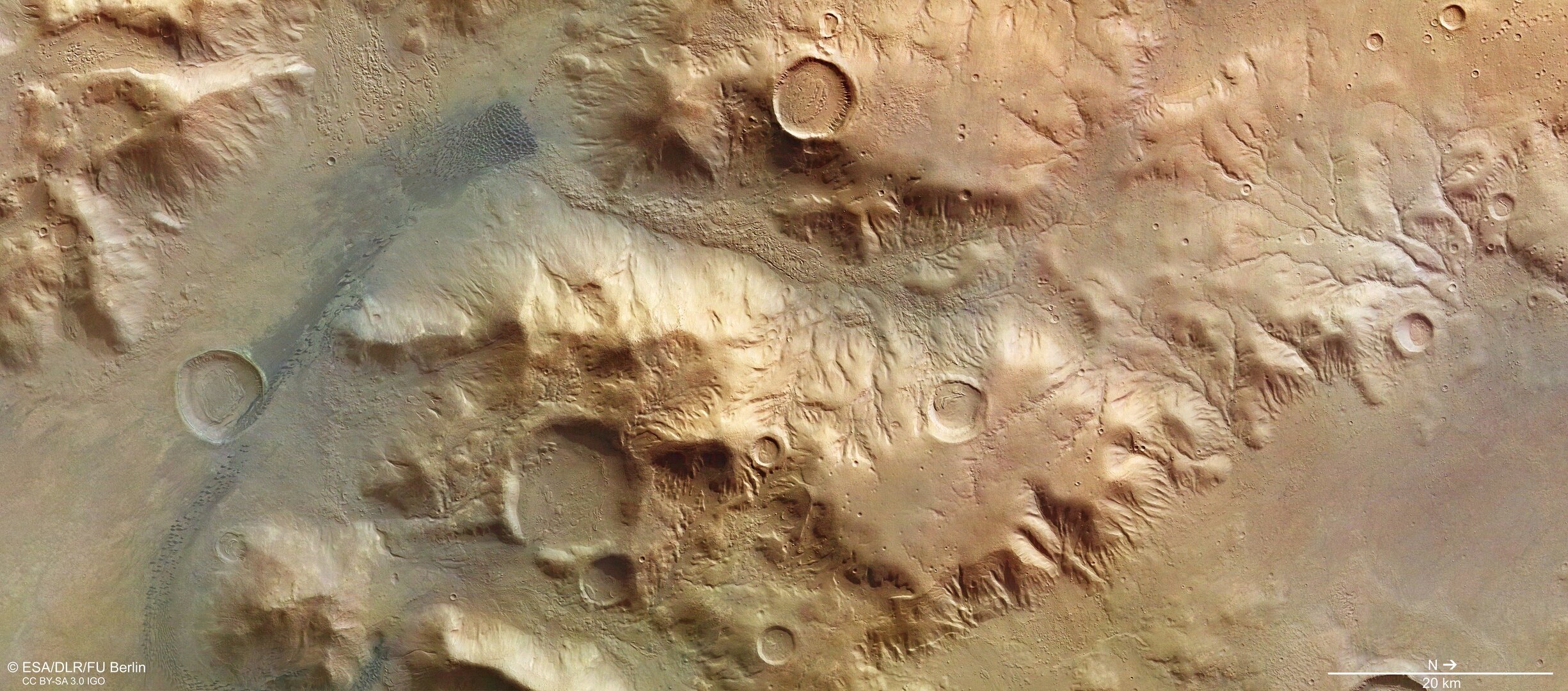Geography of Mars
Although Mars is a small planet – its radius is just a little over half of Earth's – we now know that it boasts scenery on a scale that makes Mount Everest and the Grand Canyon seem unimpressive by comparison.
Running from the eastern flanks of the rise, roughly along the equator, is Valles Marineris. This is a split in the Martian crust 4000 kilometres long (about a fifth of the distance around the whole of Mars), up to 600 kilometres wide and seven kilometres deep. The Grand Canyon is a mere 450 kilometres long, up to 29 kilometres wide and 1.6 kilometres deep.
Then there is the Hellas Basin in the southern hemisphere, which is an enormous impact crater 2300 kilometres in diameter and more than nine kilometres deep.

But perhaps most striking of all is the general difference in height and surface roughness between the northern and southern hemispheres. The northern hemisphere is smooth and flat and on average six kilometres lower than the rugged highlands of the south.
It has the highest volcano in the solar system, Olympus Mons which stands at 26 kilometres above the surrounding plain: Mount Everest is only one third as high.
Olympus Mons lies at the western edge of another gargantuan feature, the Tharsis dome which is a 10 kilometre-high, 4000 kilometre-wide bulge in the Martian surface.







